-
The Bride’s Guide to Wedding Gown Fabrics
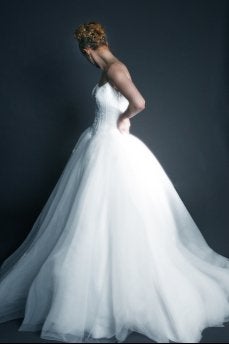 From afar, many wedding dresses may appear the same. On closer inspection, though, it become clear that the fabrics used to construct these gowns can vary widely in their look, feel, and support. So before making plans to design your own wedding dress, it is important to understand the differences between different kinds of wedding fabrics available in San Francisco.
From afar, many wedding dresses may appear the same. On closer inspection, though, it become clear that the fabrics used to construct these gowns can vary widely in their look, feel, and support. So before making plans to design your own wedding dress, it is important to understand the differences between different kinds of wedding fabrics available in San Francisco. Lace
Given its transparency, lace fabric is typically a material used in conjunction with other bridal fabric . Lace can come in a myriad of designs, and on many wedding dresses, it takes a central focus. As a result, lace should be paired with another wedding fabric that can ably support it.
Organza
Do you want a voluminous wedding dress? Then you may want to look into your organza options at your nearest fabric store in San Francisco. Organza is a stiff bridal fabric that can add volume to the skirt of your wedding gown. Some people might be surprised to learn that organza is a type of silk, which normally drapes the silhouette.
Satin
Satin is another wedding fabric that originates from silk. Unlike organza, satin is normally not hidden under other bridal fabric. Because of its gorgeous luster, satin is a popular material for the main construction of a wedding gown. It also is a highly versatile fabric that brides may use for their dresses regardless of season.
Taffeta
Yet another derivative of silk is taffeta. Like organza, taffeta is a highly structured material, making it an ideal bridal fabric choice for brides who want ample support for their wedding gowns. Similar to satin, though, taffeta typically exhibits a high sheen. Rather than create a wedding dress made of satin with an organza underskirt, some brides might opt to make a taffeta gown because this singular material features the characteristics of these other fabrics.
Tulle
Tulle is a wedding fabric that is often added to a gown as a decorative element. Like lace fabric, tulle is normally transparent. Tulle fabric also has an airy quality to it, so many brides use it as an overlay on their dress skirts. Tulle is likewise a popular choice for brides who may be making their own wedding veils
-
Popular Fabrics for Bridal Gowns
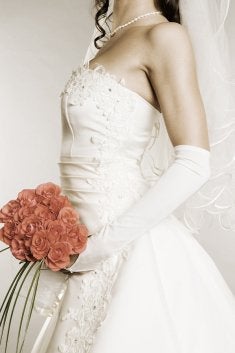 Are you having your bridal gown custom made? To ensure that their wedding dresses match the style they want, many brides opt to purchase wedding fabric near San Francisco and have their gowns created to their specifications. However, some women overlook the important of material selection when considering their wedding fabric options. Fabrics can vary greatly in their look and weight, which can greatly affect the appearance and fit of the resulting gowns. By knowing the different qualities of the most popular bridal fabrics, you can make sure that your dress lives up to your expectations.
Are you having your bridal gown custom made? To ensure that their wedding dresses match the style they want, many brides opt to purchase wedding fabric near San Francisco and have their gowns created to their specifications. However, some women overlook the important of material selection when considering their wedding fabric options. Fabrics can vary greatly in their look and weight, which can greatly affect the appearance and fit of the resulting gowns. By knowing the different qualities of the most popular bridal fabrics, you can make sure that your dress lives up to your expectations. Silk
If you intend to purchase your own bridal fabric , silk may be an initial consideration. Silk fabric is commonly used in the construction of wedding dresses for several reasons. For one, silk is a soft material that elegantly drapes around the body. Two, silk gives off a light sheen that makes it a popular choice for more formal occasions such as weddings. Should you want to use silk for your bridal gown, consult a discount fabric store in San Francisco, as it is likely to have the most competitive prices for silk fabric.
Shantung
Many brides like to put a modern twist on an old classic, which is why more and more women are choosing shantung for their wedding dresses. Shantung is actually a type of silk fabric, but its appearance is typically less delicate than its source material. Women who want a unique look for their bridal gowns might select shantung for its irregular properties.
Velvet
Will you be having a winter wedding? Then velvet might be the perfect bridal fabric for you. This material has long been associated with the cooler seasons, as it exudes a sumptuous quality. Velvet also plays an important functional role, as it can provide more warmth than thinner wedding fabrics.
Chiffon
If you want your wedding dress to have a lighter-than-air quality, consider chiffon. This translucent bridal fabric has long been a favorite of many women, as it can add both sophistication and volume to wedding dresses. Especially for brides who want a princess-like look to their wedding dresses, chiffon can make the perfect top layer on any bridal gown. However, because of its sheer texture, chiffon typically requires a thicker or more opaque under layer as well.
-
How to Choose the Right Fabric for Your Window Treatments
How to Choose the Right Fabric for Your Window Treatments
 The right window treatments can totally transform any room in your home. Even if you are more concerned about the functionality of the window coverings, don’t ignore the opportunity to make a big design statement with new window dressings. Whether you’re making the coverings yourself or picking out fabric for custom-made window treatments, the following tips will help you choose the right fabric from your San Francisco fabric depot .
The right window treatments can totally transform any room in your home. Even if you are more concerned about the functionality of the window coverings, don’t ignore the opportunity to make a big design statement with new window dressings. Whether you’re making the coverings yourself or picking out fabric for custom-made window treatments, the following tips will help you choose the right fabric from your San Francisco fabric depot .Define the Mood of the Room
For starters, define the mood of the room that you are working in. For a formal space, heavy silk and velvet both provide richness and weight that give off a more luxurious feel. For a more casual space, such as a bedroom or office, consider billowy linen and crushed velvet. Cotton and wool blends can bring a crisp, neat feel in any room.
Consider the Room’s decor
Once you define the mood of the room, consider the decor and artwork that is most important to the overall look of the space. Once you identify the most important decor, decide if you want the window treatments to blend with the pieces or stand out in contrast. For blending, choose window treatment fabrics in the same tone as the decor but a few shades darker, or choose a non-dominant subtle color in the rooms such as a soft shade from the sofa or rug, for example. You have much more room for creativity when selecting bold fabric to stand out and pop.
Decide on the Function of the Window Treatments
Fabric weight is just as important as color and texture. To choose the right fabric, decide on the function of the window treatments themselves. For example, if you want to block out sunlight in an east-facing bedroom, the heavy fabric will be much better than light, airy fabric. Tell your San Francisco fabric supplier about your needs for help identifying the right types of fabric for your window treatments.
-
What is Tulle Fabric?
What is Tulle Fabric?
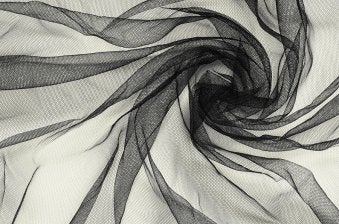 Tulle is a fine mesh net fabric most commonly used to make wedding veils and embellish wedding gowns. Tulle can be made from a variety of natural and synthetic fibers, including silk, nylon, rayon, or cotton. Tulle comes in every color of the rainbow to suit any fashion or decorating project, including evening gowns, costumes, hats, lingerie, window treatments, and floral arrangements.
Tulle is a fine mesh net fabric most commonly used to make wedding veils and embellish wedding gowns. Tulle can be made from a variety of natural and synthetic fibers, including silk, nylon, rayon, or cotton. Tulle comes in every color of the rainbow to suit any fashion or decorating project, including evening gowns, costumes, hats, lingerie, window treatments, and floral arrangements. The fabric is named for the city of Tulle, France, where it was first made. This versatile fabric first became associated with weddings when Queen Victoria used it to create her bridal gown in 1840. Visit a fabric depot in San Francisco to see all the varieties of tulle available for your fashion or decorating project. If you are shopping for wedding fabric, look for discount fabrics to save money on your big day.
-
A Brief Overview of Synthetic Upholstery Fabric
A Brief Overview of Synthetic Upholstery Fabric
 If you’re unsatisfied with your furniture upholstery, you have two options: throw out the piece, or have your furniture reupholstered. It’s usually much cheaper to reupholster old furniture than it is to buy new items, and sometimes it’s the only thing you can do to avoid parting ways with antique furniture that’s been in your family for decades. When choosing upholstery fabric in San Francisco, you will need to choose between natural and synthetic fabrics. In this article we will highlight some of the different types of synthetics and briefly cover some of the benefits of using synthetic upholstery fabric.
If you’re unsatisfied with your furniture upholstery, you have two options: throw out the piece, or have your furniture reupholstered. It’s usually much cheaper to reupholster old furniture than it is to buy new items, and sometimes it’s the only thing you can do to avoid parting ways with antique furniture that’s been in your family for decades. When choosing upholstery fabric in San Francisco, you will need to choose between natural and synthetic fabrics. In this article we will highlight some of the different types of synthetics and briefly cover some of the benefits of using synthetic upholstery fabric. Acrylic
Colorfast and stain-resistant, acrylic is a popular synthetic upholstery fabric. It is also more resistant to fading and sun damage than natural fabrics, but it can be harder to clean. Blend acrylic with natural fabrics to add durability. Visit a fabric depot in the Bay Area to see acrylic samples in person.
Acetate
Acetate is among the softest of all synthetic fibers. It’s also wrinkle-resistant and rarely pills. Homeowners most often use acetate in window treatments because of its wrinkle-resistant draping qualities and the fact that it is less affected by humidity than other fabrics.
Nylon
Although nylon is among the toughest of all synthetic upholstery fabrics, it’s not particularly comfortable. Nylon’s continuous filament means it resists stains and static electricity incredibly well, but it can’t breathe and warms up from body heat quickly.
Polyester
Polyester is a synthetic fabric consisting of strands bonded together. Polyester is fade-resistant and wears well, but it is harder to clean than most other synthetic and natural upholstery fabrics. Like acrylic, polyester is often used as part of an upholstery blend to increase durability. You can also find polyester at a fabric depot in San Francisco that is great for making your own clothes at home.
-
Tips for Washing Silk Fabric
Tips for Washing Silk Fabric
Silk fabric is known for its luxury and strength, but it can still become dirty and stained. To keep your silk fabric looking like new, start by mixing a gentle laundry detergent with lukewarm water in a bowl. Place the silk garment in the bowl, agitate it in the water, and let it soak for 10 to 15 minutes. Let the garment dry flat on a towel. Watch this video to see how easy it is to care for your silk fabrics.
Silk fabrics can turn your fashion or decorating project into a fabulous work of art. Visit a discount fabric depot in San Francisco for great deals on silk fabric for window treatments, throw pillows, bedding, and more.
-
How Much Fabric Do You Need for Reupholstering?
We all have that beloved piece of furniture that has unfortunately seen better days. Most of us hide it away until we finally decide to get rid of it, but there is another option! Instead of throwing your beloved furniture away, give it new life by reupholstering it. This option lets you replace the broken and worn down parts of the furniture with newer and better pieces. You can make an old piece usable and redesign it so it fits in with your current home decor style.
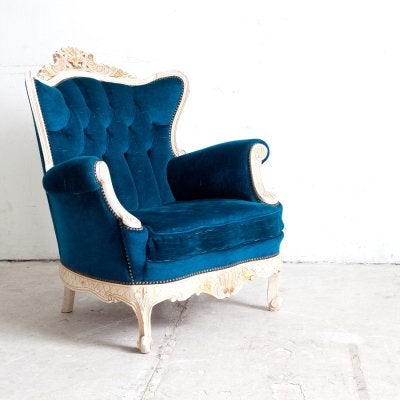
Before you can start your redesign project, you will need to determine how much fabric you need. Many elements impact how much upholstery fabric you need. This includes the size of the piece, the shape of the piece, how many detachable pieces it contains, and additional features such as zippers and buttons.
Working with a fabric store is the best way to get a good estimate of how much fabric you need to reupholster your furnishings. You can also find the perfect upholstery fabrics and get advice for your project.
-
Learn How to Make a Tutu for Your Flower Girl
Your bridesmaids have beautiful dresses to wear, but what about your flower girl? You can make this special member of your bridal party feel like a princess as she sprinkles flower petals down the aisle by making her a pretty tutu!
What this video for a tutorial on tutus. These cute skirts are easy to make, taking only a few dollars and approximately half an hour to complete. Head to the fabric store to find no-roll elastic and tulle in your desired colors. You will also need a pair of scissors and a tape measure to cut the elastic and tulle. After cutting both, you can easily attach the tulle to the elastic to create your flower girl’s perfect tutu.
Find all of the products you need to complete this product by visiting a San Francisco discount fabric store .
-
Exploring Natural Upholstery Fabric Options
Are you looking for natural upholstery fabric options for your San Francisco home? There are many different natural options that offer their own style and durability advantages. Learning about your options will help you determine which ones are right for your home:
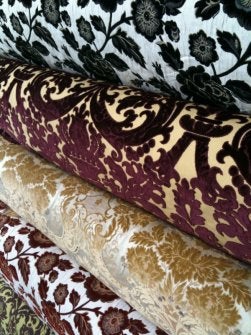
Cotton
Other than wool, cotton is the stronger natural upholstery option. That may be why this upholstery fabric is such a popular option for many different furniture pieces. Cotton can be dyed easily, making it a versatile option that can work with many different decor styles. This upholstery fabric also offers breathability, resulting in comfortable furniture that is great for the most popular rooms in the house.
Wool
As stated above, wool is the strongest natural upholstery fabric you can choose for your home furnishings. This is a great choice if durability is your top priority when searching for upholstery for floors, furnishings, or accessories. Wool can be too harsh for some commonly used furnishings, but it is a great choice for carpeting and area rugs to add warmth to your home.
Linen
This upholstery fabric is not as versatile as others because it is highly susceptible to wrinkles and soils. Linen is still a popular choice because it is stain resistant and offers a touch of elegance and beauty to any decor. You can incorporate this naturally beautiful fabric into your home decor with table linens or window treatments.
Leather
If you are looking for a different feel, you might choose leather for your home furnishings. Leather tends to last longer than many other fabric options, making it a great choice for living room furniture that is used on a regular basis. Homeowners that choose leather also find that it is easy to keep clean and looking great!
Silk
Keep it natural while adding elegance to your home decor with silk fabric upholstery. This option can fit it with a variety of decor styles because it comes in different weights and colors. Silk is a popular choice for window treatments, but you can experiment with different fabrics to find the perfect fit for your home.
-
An Easy Cleaning Guide for Upholstery Fabric
Visiting a fabric store in San Francisco is the perfect way to find the right fabric for every piece of furniture in your home. You can make the most of your fabric purchases by learning how to properly clean stains that you come across in the future:
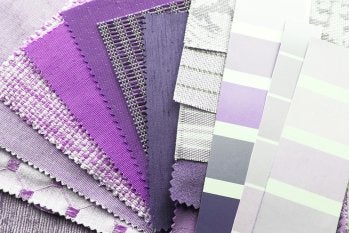
Remove Whatever You Can
No matter what kind of stain you want to remove from your upholstery fabric, it is important to start by removing however much of whatever caused the stain as you can. If the stain just occurred, use a rubber spatula to carefully pick up the item or a soft cloth to absorb it, trying not to make the stain worse as you do. If the stain is dry, use an appropriate tool to remove any hard or crusty parts that make be rising up off of the upholstery.
Dust Away Any Leftover Particles
If you are cleaning a still-wet stain, you will have already removed whatever you can. A dry stain might still have some leftover particles that can be removed in order to return the upholstery to its original appearance. Use some sort of brush to gently go back and forth over the stain. A brush attachment for a vacuum hose is a great tool for this step. You can get a deeper clean by removing the upholstery containing the stain to brush it off if possible.
Clean and Dry Your Upholstery
Mix a small amount of mild detergent with water to create a cleaning solution for your sofa or chair upholstery. You should mix the two until they create foam and then use a toothbrush to gently rub the foam onto the upholstery stain. Use a rubber spatula or soft cloth to carefully wipe away the foam once it has removed the stain. Gently blot the area with a clean wet cloth to remove any excess cleaner. Keep all furniture pieces separate to give them adequate time to dry. Once everything is completely dry, put it back into place. These tips should keep all of your fabric upholstery clean and stain-free!
RECENT POSTS
categories
- Uncategorized
- Weddings
- Sewing
- Fabrics
- Discount Fabrics
- Upholstery
- Fabric Store
- Upholstery Fabric
- San Francisco fabric
- window treatment
- washing fabric
- dance outfit
- tulle fabric
- Discount Fabric
- Uniform
- Fabric Outlet
- Bridal Fabric
- Wedding Fabric
- Wedding Gown
- bridesmaid’s dresses
- Halloween costume
- Holiday Ideas
